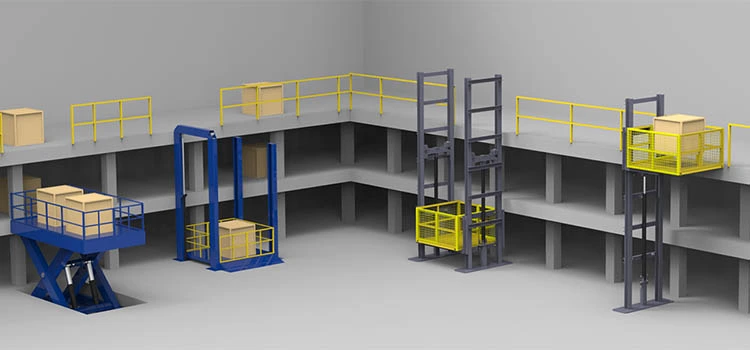Top Lift Companies in London: Offering Quality Installations and Maintenance
Top Lift Companies in London: Offering Quality Installations and Maintenance
Blog Article
Exploring the World of Lifts: Typical Issues Encountered by Different Lift Mechanisms
As we navigate with the upright transport systems of contemporary structures, lifts stand out as an essential part of our daily lives. From hydraulic elevators to grip systems and machine-room-less layouts, each lift type comes with its set of common problems.
Hydraulic Lifts
Hydraulic lifts, typically favored for low-rise buildings, use fluid stress to regulate the motion of the lift vehicle (lift repair companies). This system entails a hydraulic pump pressing oil into a cylinder, triggering the elevator to relocate in the preferred instructions. While hydraulic elevators are understood for their smooth and peaceful procedure, they do come with their very own set of common problems
One common issue with hydraulic lifts is oil leak. The seals in the hydraulic system can wear in time, leading to oil infiltration. If left unaddressed, this not just develops a mess yet can also affect the lift's efficiency. In addition, concerns with the control system, such as damaged shutoffs or a malfunctioning pump, can create disruptions in the elevator's movement.
Normal upkeep and punctual repair services are crucial to ensure the smooth performance of hydraulic lifts. By attending to these typical concerns proactively, structure owners can reduce downtime and ensure the safety and performance of their upright transportation system.
Grip Elevators
When considering upright transport systems in buildings, another usual type aside from hydraulic lifts is the traction lift. Grip elevators run utilizing a system of ropes and counterweights that relocate the elevator auto by clutching onto the hoist ropes. This system permits smoother and much faster vertical transport compared to hydraulic systems.
One of the typical issues encountered by traction lifts is rope wear. The continuous activity of the ropes within the grip system can lead to damage gradually, potentially creating the elevator to breakdown or become harmful for use. Normal assessments and upkeep of the ropes are important to make certain the elevator's correct functioning and safety and security.
Another concern that traction elevators might encounter is associated with the control system. Problems with the control system can cause concerns such as erratic activity, hold-ups in feedback times, or also complete shutdowns. Regular screening and maintenance of the control system are vital to stop such problems and ensure the elevator's dependability.
Machine-Room-Less (MRL) Elevators

Among the crucial we maintain lifts components of MRL lifts is the small gearless traction equipment that is set up within the hoistway. This device efficiently drives the lift automobile without the need for cumbersome devices found in typical traction lifts. Furthermore, MRL elevators generally use a weight system to balance the auto, additional enhancing their power efficiency.
Regardless of their advantages, MRL elevators might face difficulties associated with maintenance and repair work as a result of the confined area for tools installation. Access for servicing components within the shaft can be limited, needing specialized training for technicians. Appropriate upkeep routines and normal evaluations are essential to guarantee the ongoing smooth procedure of MRL lift companies in London elevators.
Overloading and Weight Limit Issues
Overloading and weight limit issues are crucial issues in elevator procedures. Lift suppliers style lifts with particular weight capacities to ensure passenger safety and security and tools durability.
When elevators are overloaded, it places too much stress on the motor, cables, and various other parts, potentially causing breakdowns or failures. Safety mechanisms such as sensing units and overload sensors are in area to avoid lifts from moving if they detect excess weight. In addition, surpassing weight limits can bring about boosted power usage and wear and tear on the lift system.
To reduce overloading problems, building supervisors should plainly display weight restrictions in elevators and enlighten residents on the relevance of adhering to these constraints - lift repair companies. Routine upkeep checks by qualified professionals can likewise aid make sure that elevators are operating within secure weight parameters. By resolving overloading and weight limit problems proactively, structure owners can improve lift safety and effectiveness
Electric System Failures
Surpassing weight restrictions in lifts can not just lead to mechanical concerns yet additionally possibly add to electric system failings within the lift facilities. Electrical system failures are an important problem in lift procedure, as they can create unforeseen shutdowns, malfunctions, or even safety hazards.
Routine maintenance and inspections are crucial to determine and address possible electrical concerns quickly, making sure the safe and reliable operation of lift systems. By sticking to weight limitations and performing routine electric system checks, building proprietors can minimize the danger of electric failures in elevators.
Verdict

Hydraulic elevators, often favored for low-rise buildings, make use of fluid pressure to regulate the motion of the elevator cars and truck.When thinking about vertical transport systems in structures, one more common type apart from hydraulic elevators is the grip elevator. Grip elevators run utilizing a system of ropes and weights that move the lift vehicle by clutching onto the hoist ropes. Unlike conventional lifts that require a different device area to house the equipment, MRL lifts integrate most of the parts within the shaft, eliminating the requirement for a devoted equipment space.In verdict, elevators deal with usual issues such as hydraulic breakdowns, traction system failures, and electric system troubles.
Report this page